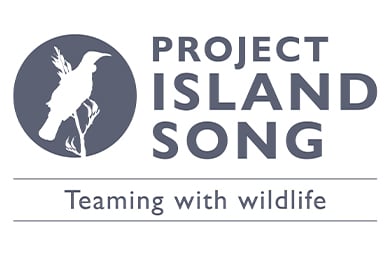About the project

The steps in Project Island Song are ongoing island biosecurity, mainland pest control, planting, landscape and species restoration.
Native species are being reintroduced to the islands, helping the islands sing again. Saddlebacks/tīeke, North Island robins/toutouwai and whiteheads/pōpokotea are some of these songsters.
The project is led by Guardians of the Bay of Islands, Patukeha and Ngati Kuta (resident hapu at Te Rawhiti), and DOC. It is supported by local island and mainland landowners and managers, residents and tourism interests.
The Guardians are also working with the following groups on a complementary mainland pest control project:
- Northland Regional Council
- Eastern Bay of Islands Preservation Society
- Te Rawhiti Enterprises Ltd
- New Zealand Kiwi Foundation
- Russell Landcare Trust
Project Island Song includes all of the islands in the chain from Motuarohia (Roberton Island) eastwards including Moturua, Motukiekie, Okahu, Waewaetorea, Urupukapuka, Poroporo, and all their associated islets including the stepping-stone islets in the Rawhiti channel.

Map of islands included in the Project Island Song project
The project targets Norway rats, ship rats, mice, stoats, Argentine ants and plague skinks. Ground-trapping and using trained dogs to help locate any rats, mice or stoats that make it out to the islands, will be necessary to make sure all the islands stay pest-free.
Next steps
With the eradication stage complete, it is critical that pests are prevented from reinvading the islands. Pests may arrive with people visiting pest free islands. Your help is essential in helping reduce this risk.
Restoration of the islands is part of a wider project involving reforestation of parts of the islands, track upgrades and improved archaeological interpretation.
More information
- Project Island Song website - for full details on the project including news and resources
- Moturua Island Scenic Reserve
- Motuarohia (Roberton) Island track
- Moturua Island track